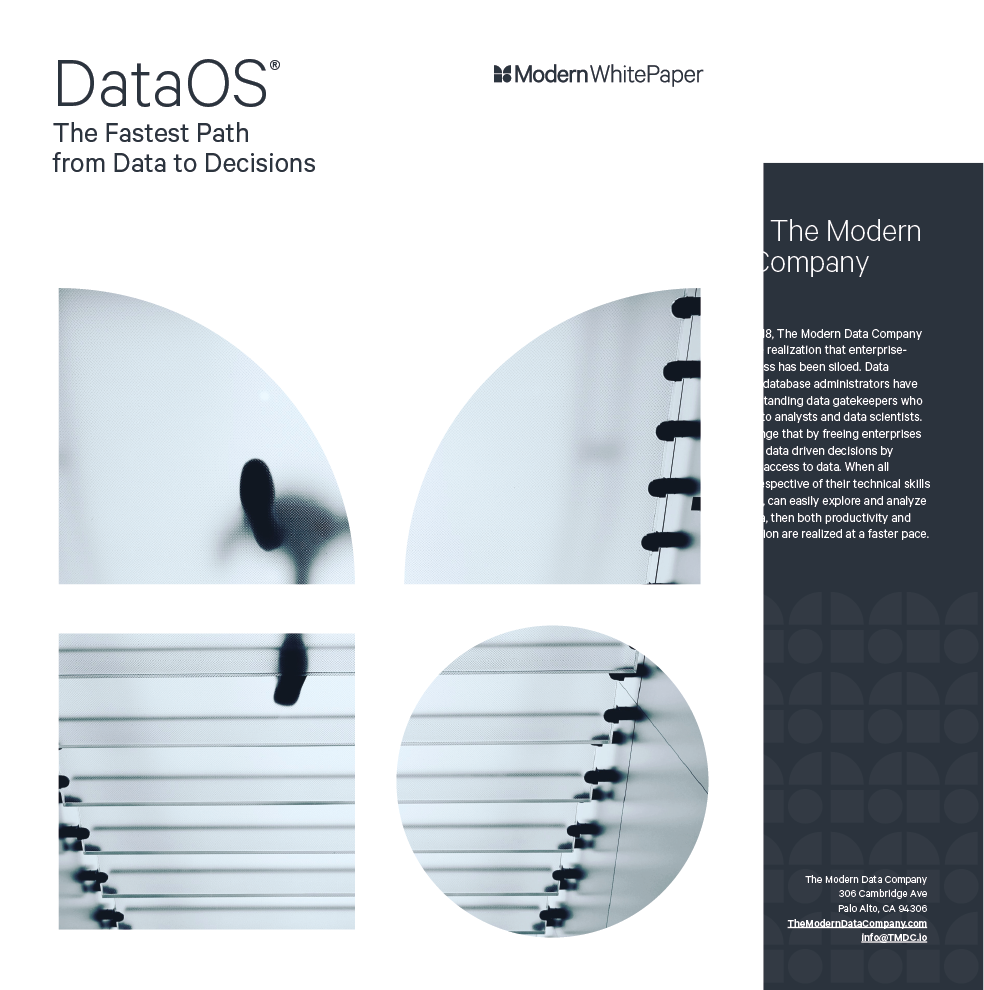
How to drive trusted decisions without changing your current data infrastructure.
Learn more about DataOS® in our white paper.
In an episode of the popular British show The Office, a branch manager of a paper company walks through the warehouse with a district administrator. The administrator remarks that inventory levels are “scary” and admonishes the branch manager not to tie up any more cash purchasing stock for the warehouse.
This small scene underscores a pervasive problem in any industry selling physical products: How much inventory is too much? Too little? And how does a company pivot quickly with sudden changes in customer behavior or supply chain disruptions? With the advent of big data, inventory challenges may become a thing of the past.
Machine learning uses algorithms to process extraordinary amounts of data on behalf of humans, who are great at interpreting patterns. Supply chains and shopping patterns are becoming more complex as the world becomes more connected, and machine learning expands what humans can do with supply chain data.
A data science approach to inventory forecasting and control can differentiate businesses from competitors. Companies can more accurately forecast demand to keep latent inventory low rather than making inventory purchases the way the branch manager above did––based on historical trends rather than what’s happening now.
McKinsey estimates that companies can improve inventory levels by 35% and lower costs by at least 15% by implementing AI-enabled supply chain tools. In a different study focusing on Germany but with worldwide impact, McKinsey estimated that just by implementing AI-enabled supply chain management, companies could reduce inventory forecasting errors up to 50% while scaling back inventory in holding by 50%. Those are significant margins when organizations lose cash and sales by incorrectly predicting how much stock to hold.
Algorithms ingest big data––sales, demographics, competitor information, item promotions, and even the weather––to find patterns and trends before they happen. They can help businesses manage inventory levels, plan for inventory spikes or lulls, and predict natural events that cause disruption. Companies switching from outdated manual methods can leverage machine learning for many tasks.
Traditionally, manual processes focusing on historical data could determine likely patterns when everything went according to plan. Add in one anomalous detail like COVID-19, and these patterns become hopelessly lost. Manual processes also fail when it comes to seasonal items because their movement is harder to predict.
Machine learning uses methods like top-down forecasting to better predict inventory for products with intermittent demand. It happens automatically and reduces mistakes made by manual processes.
Having a sale isn’t the only way promotions will affect inventory movement. Companies can use machine learning to predict:
In each instance, a manual analysis may miss patterns causing companies to over- or under-spend for inventory outside the related promotion.
Companies already plan inventory levels based on location, but machine learning makes accuracy in smaller areas possible. It can help plan distribution levels to each individual store within a city, for example, or make small launches possible (and profitable).
Companies can go beyond store location analysis to future decisions––where to open new locations or what new products may work in which location. Businesses can minimize costly mistakes in inventory investments and offer better value for each location.
These algorithms are only as good as the data that supplies them. If companies can harness the power of big data in real-time, they’ll be able to make decisions based on the most current insights.
Real-time data offers:
Real-time data powering machine learning tools can reduce bottlenecks caused by any one of the above situations. It can streamline operations and turn inventory back into an asset rather than a liability.
A comprehensive data operating system eliminates silos from a complex supply chain and frees up data to be in motion. A data operating system makes data visible instead of locking data away in multiple tools, storage systems, and even other locations from partner vendors.
DataOS from The Modern Data Company offers a user-friendly dashboard with comprehensive governance controls. Stakeholders have access to the data they need in real-time while protecting sensitive data and can make decisions in real-time. Your data remains yours, and there is no need to replace existing tools. Instead, weave a connective tissue through your existing ecosystem with DataOS.
It’s time to find out how real-time data can transform your inventory management. Download our latest eBook, ‘Uncovering and Driving Growth for Distributors with Advanced Analytics (and How It’s Done with DataOps)” to see how it’s done.
Be the first to know about the latest insights from Modern.

The elegance of Data Products is undeniable, but many leaders question the efficacy of their data strategies: Why does the return on data investments often disappoint? Why is proving data's value becoming harder? Why do data models become more cumbersome than...

Data is vital to business but the process of getting from data to insights is often murky. Many on the business side may not even care how it happens but understanding this process matters. It matters a lot. With this in mind, let's explore how to demystify the...

We don't want to restrict the scope of this article to only data leaders and influential executives. As startup folks, we are confident in how individual contributors or ICs, such as Data Engineers, DevOps experts, or even the surprising intern, could influence the...

It's a tale as old as time. A startup manages to disrupt an entire industry only to find itself at a critical juncture a few years down the road. Data, the lifeblood of its operations, was becoming increasingly complex and unwieldy. With each new product launch and...

For today's Chief Data Officers (CDOs) and data teams, the struggle is real. We're drowning in data yet thirsting for actionable insights. Traditional data architectures, with their centralized data lakes and batch-oriented processing, are like bloated, slow-moving...
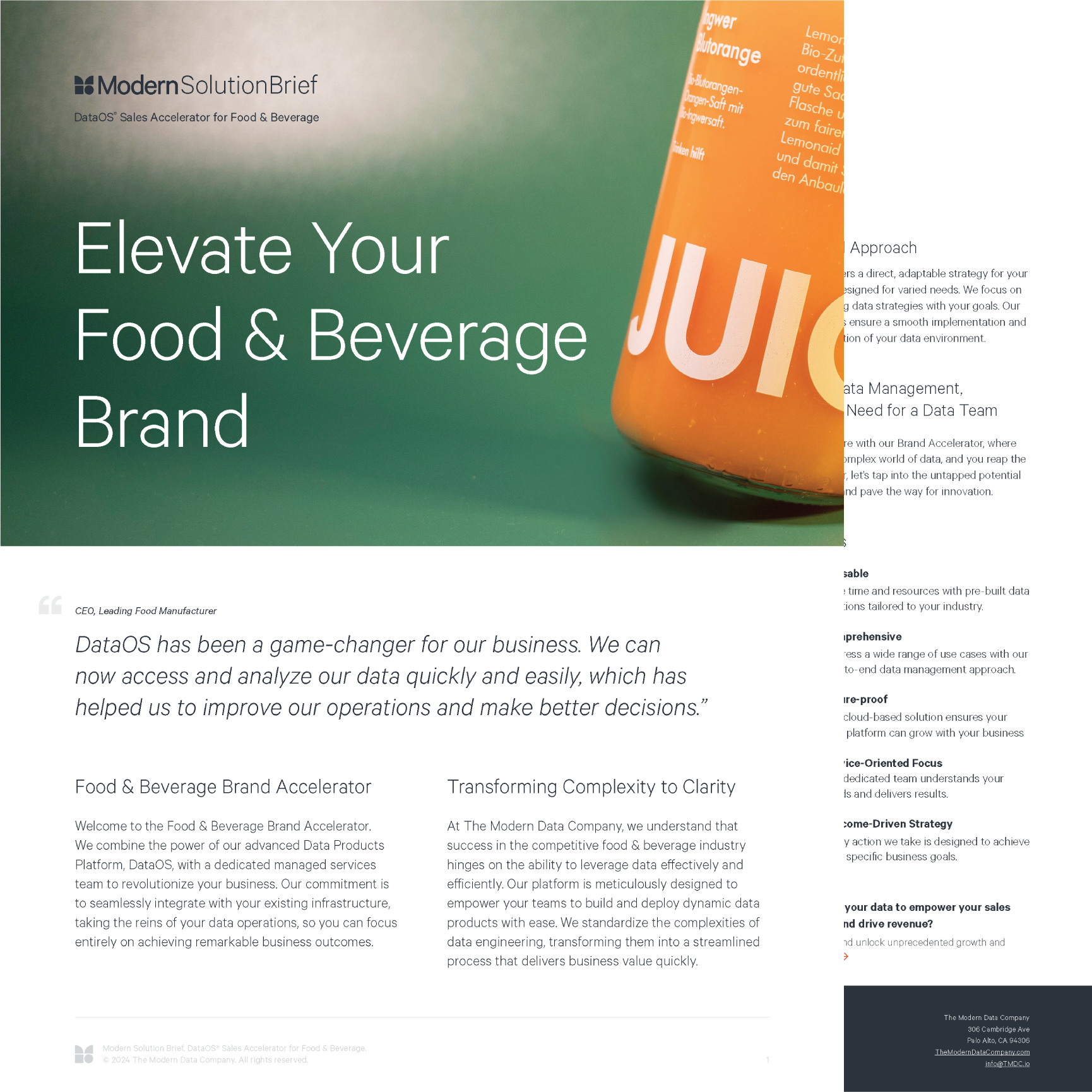
DataOS Sales Accelerator for Food & Beverage The dynamic food & beverage industry demands a data-driven approach to success. The Modern Data Company's DataOS® Sales Accelerator acts as your all-in-one data concierge. Our pre-built solutions, designed...
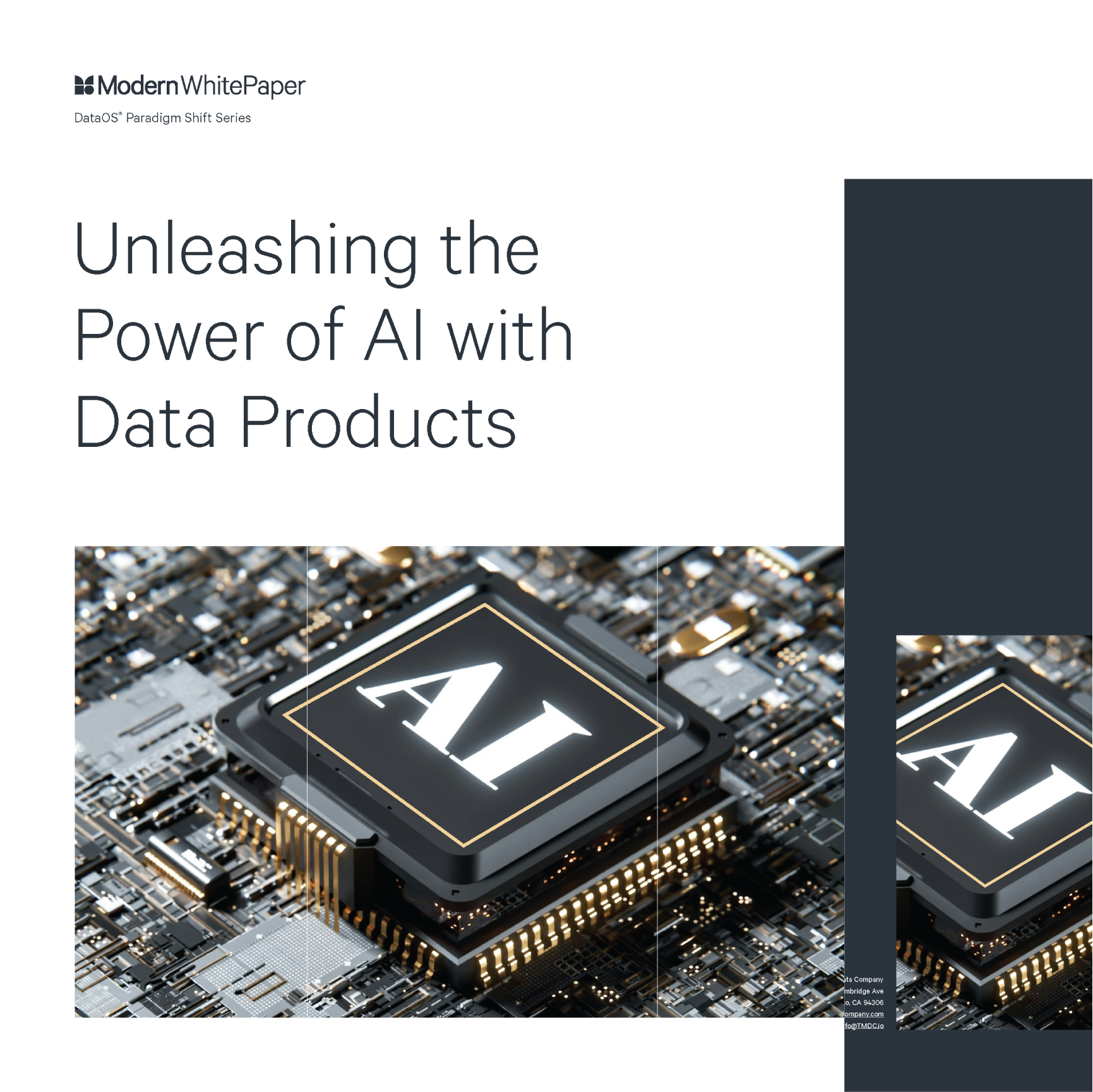
Unleashing the Power of AI with Data Products Traditional project-centric data management stifles AI innovation with siloed data, slow workflows, and limited reusability. Enter the era of data products: self-contained modules of data, logic, and infrastructure that...
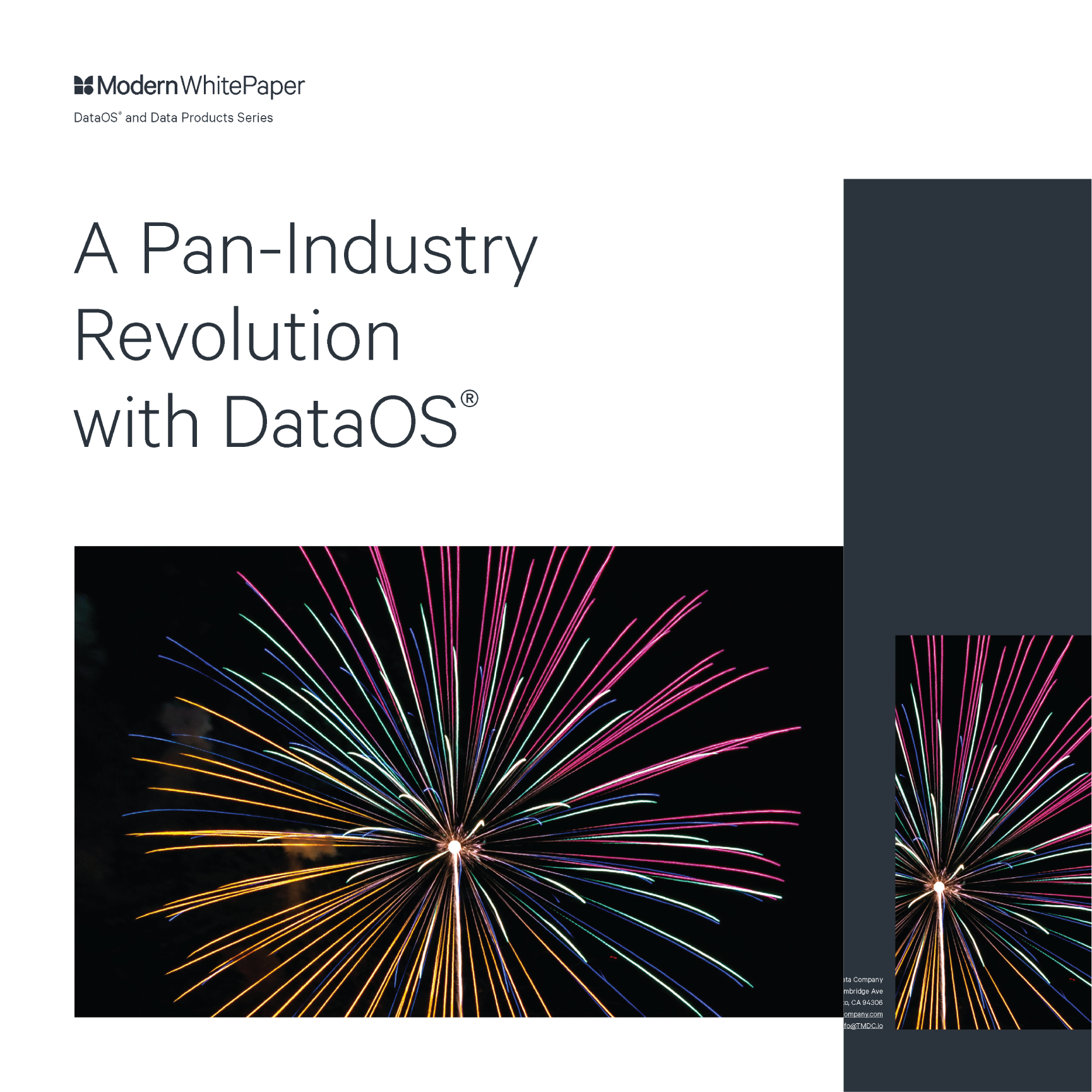
A Pan-Industry Revolution with DataOS® Unleash the revolution with Data Products powered by DataOS®. These self-contained data units, bursting with actionable insights, offer unmatched flexibility, agility, and compliance across all sectors. From personalized customer...

Cross-Sell Accelerator for Credit Cards In the hyper-competitive BFSI landscape, maximize credit card cross-sell potential with data-driven precision. Cross-Sell Accelerator empowers you to forge deeper customer connections with personalized offers, optimize...
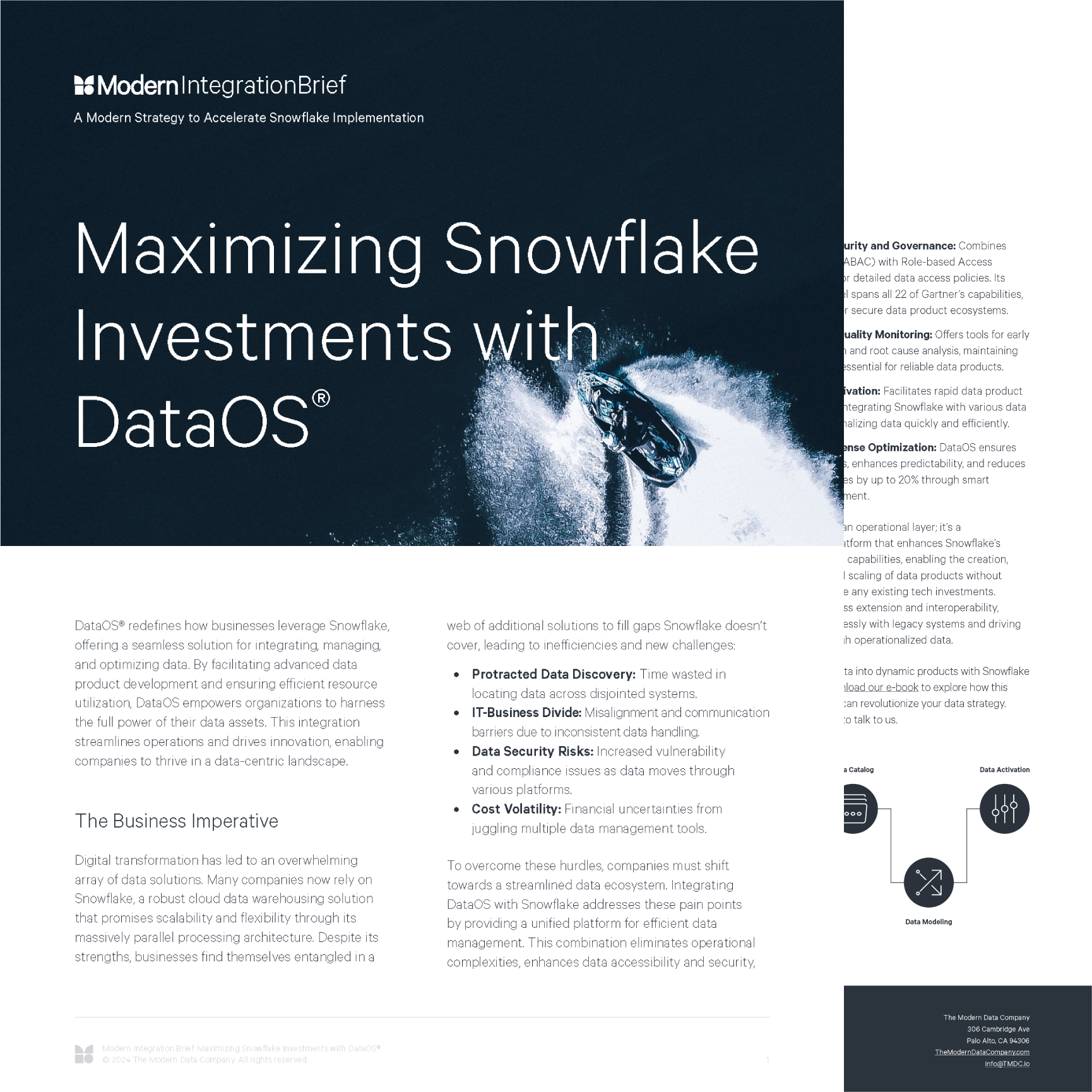
Maximizing Snowflake Investments with DataOSUnleash the true potential of your Snowflake investment with DataOS®, the data product platform that seamlessly integrates, empowers, and elevates your existing infrastructure. Build robust data products faster, eliminate...